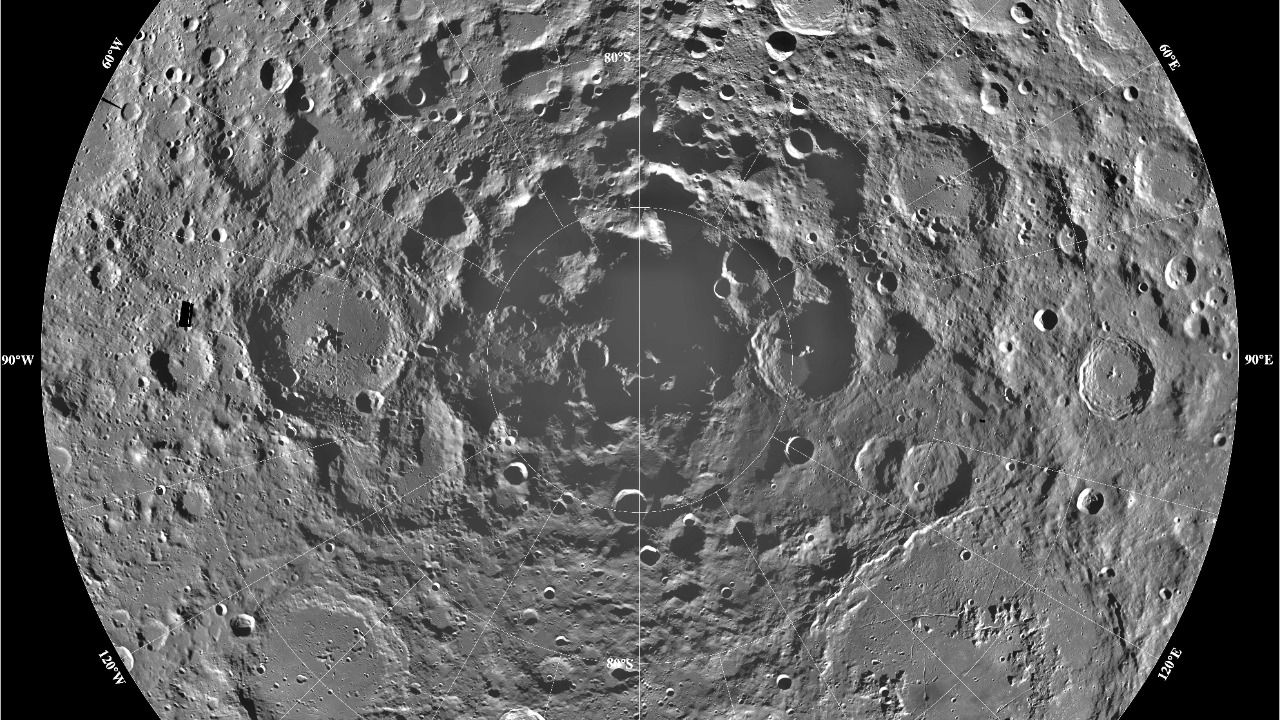
NASA is gearing up for an ambitious mission to explore the Moon’s largest crater, aiming to uncover mysterious elements hidden beneath its surface. This mission, set to commence soon, focuses on the enigmatic South Pole region, which has intrigued scientists for years. Meanwhile, in a separate astronomical event, NASA’s recent images captured Jupiter’s elusive 5th moon crossing the Great Red Spot, adding to the excitement of space exploration.
The Moon’s Largest Impact Feature
The Moon’s biggest crater, known as the South Pole-Aitken Basin, is a colossal impact feature that stretches approximately 2,500 kilometers in diameter and plunges to depths of up to 8 kilometers. This vast expanse has long been a subject of scientific curiosity due to its potential to reveal insights into the Moon’s history and composition. NASA’s upcoming mission aims to dig into this crater, leveraging advanced technologies to uncover what lies beneath its surface. The mission’s announcement highlights the presence of anomalous materials or structures within the crater, sparking intrigue about their origins and significance (Daily Galaxy).
NASA’s preparatory efforts for this excavation involve cutting-edge technologies designed to withstand the harsh lunar environment. The timeline for this mission is meticulously planned, with operations set to begin shortly. The stakes are high, as uncovering these hidden elements could reshape our understanding of lunar geology and potentially offer clues about the early solar system. This mission represents a significant step in NASA’s broader lunar exploration strategy, aiming to unlock the Moon’s secrets and pave the way for future endeavors (Daily Galaxy).
Mysteries at the Lunar South Pole
The Moon’s South Pole is a region shrouded in mystery, with its unique conditions and potential resources drawing the attention of scientists worldwide. Among the primary enigmas are the permanently shadowed craters, which may harbor water ice and other volatile compounds. These resources could be crucial for sustaining future lunar missions and even supporting human habitation. The South Pole’s geological oddities, such as unusual rock formations and magnetic anomalies, further contribute to its allure (BBC).
The South Pole’s extreme lighting and temperature conditions add another layer of complexity to its exploration. The region experiences prolonged periods of darkness and light, creating challenges for both robotic and human explorers. These conditions, however, also offer unique opportunities for scientific study, as they may preserve ancient materials in a pristine state. NASA’s focus on the South Pole aligns with its long-term lunar strategy, which emphasizes the importance of understanding these unresolved questions to facilitate a sustainable human presence on the Moon (BBC).
Unexpected Discoveries in the Outer Solar System
In a remarkable observation, NASA’s recent images captured Jupiter’s elusive 5th moon as it crossed the Great Red Spot. This event, documented in May 2024, provided a rare glimpse of the moon’s path and its interaction with Jupiter’s iconic storm. The sighting of this moon, which is notoriously difficult to observe due to its small size and rapid orbit, offers valuable insights into the dynamics of Jupiter’s moons and the planet’s atmospheric conditions (Live Science).
The scientific implications of this observation are significant, as it enhances our understanding of the complex gravitational interactions within the Jovian system. Observing the 5th moon in such a position is a testament to the advancements in planetary observation technologies, which continue to push the boundaries of what we can learn about our solar system. NASA’s role in capturing these images underscores its commitment to exploring the outer reaches of our celestial neighborhood and expanding our knowledge of planetary systems (Live Science).
Implications for Future Lunar Exploration
The findings from the Moon’s largest crater could have profound implications for NASA’s overall lunar program. By uncovering the mysterious elements within the South Pole-Aitken Basin, scientists hope to gain insights into the Moon’s formation and evolution, which could inform future missions and exploration strategies. This mission is a critical component of NASA’s efforts to establish a sustainable human presence on the Moon, leveraging the South Pole’s resources and unique conditions to support long-term habitation (Daily Galaxy).
Integrating the mysteries of the South Pole into NASA’s plans is essential for addressing the challenges of lunar exploration. The potential discovery of water ice and other resources could provide the necessary support for extended missions, reducing the reliance on Earth-based supplies. Additionally, the parallels between lunar digs and distant observations, such as the study of Jupiter’s 5th moon, highlight the interconnected nature of space exploration. These efforts demonstrate NASA’s commitment to advancing our understanding of both the Moon and the broader solar system, paving the way for future discoveries and innovations (BBC).